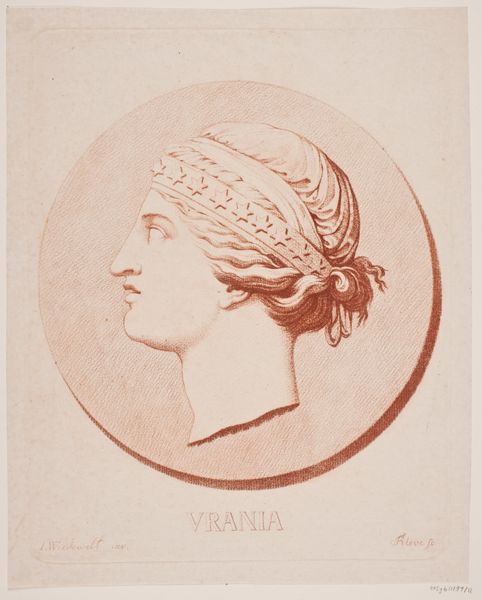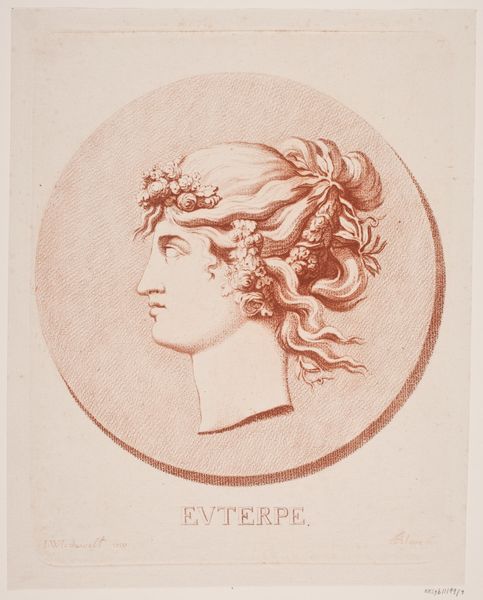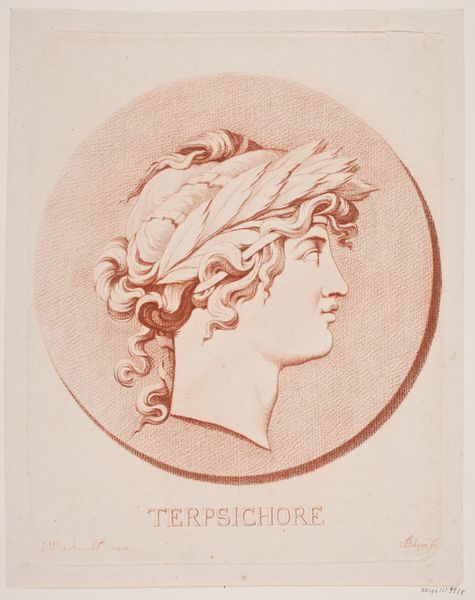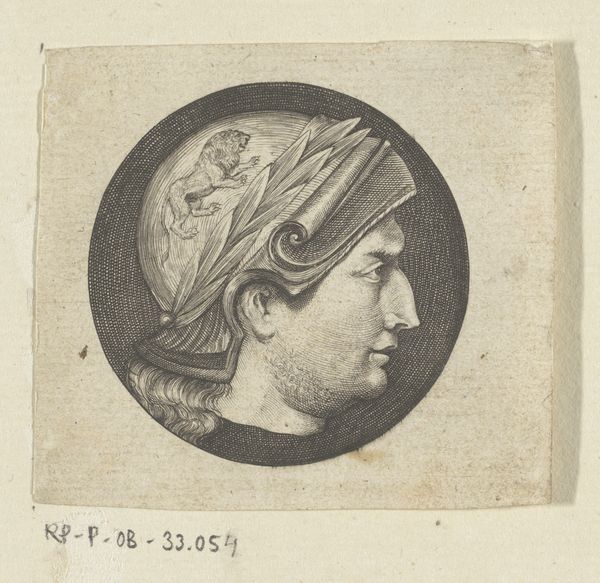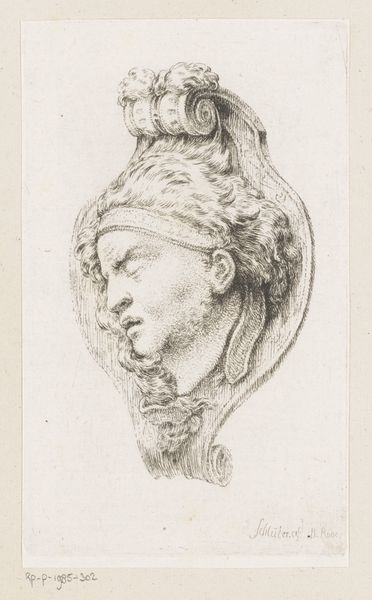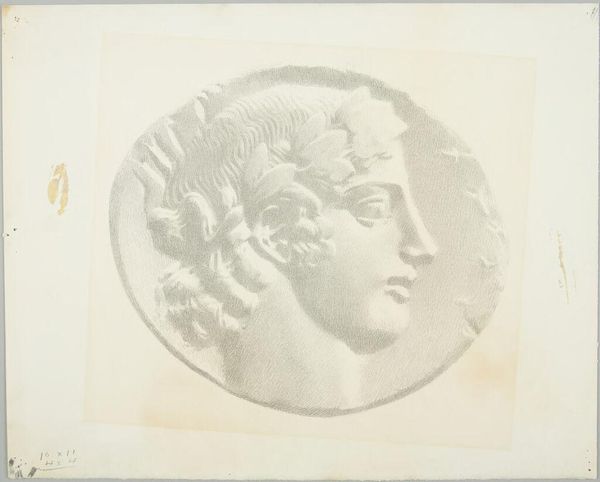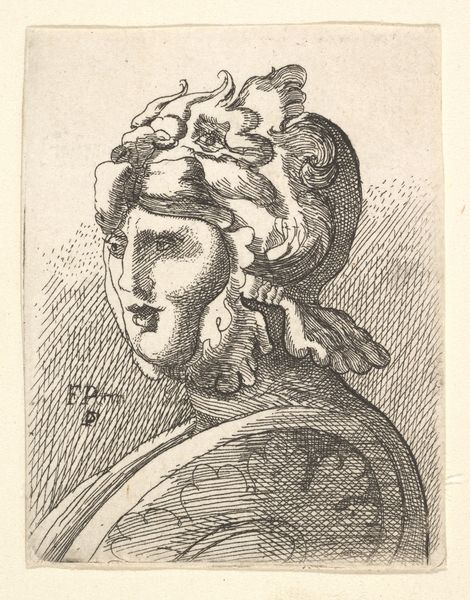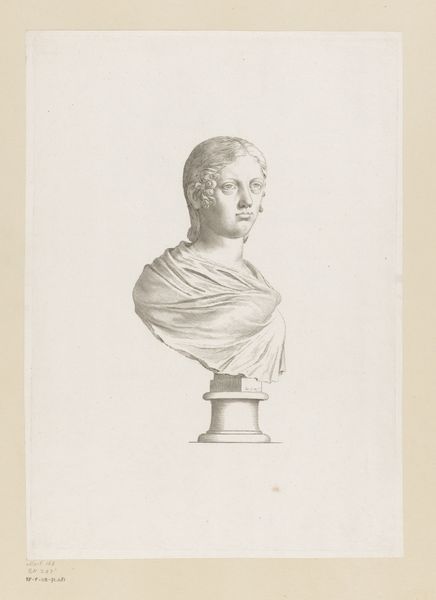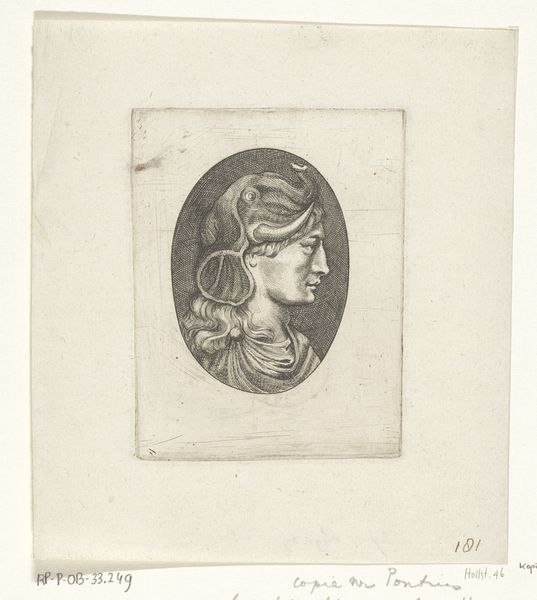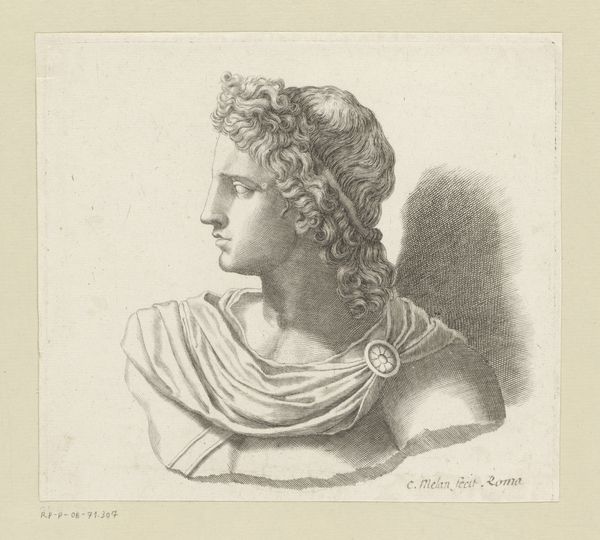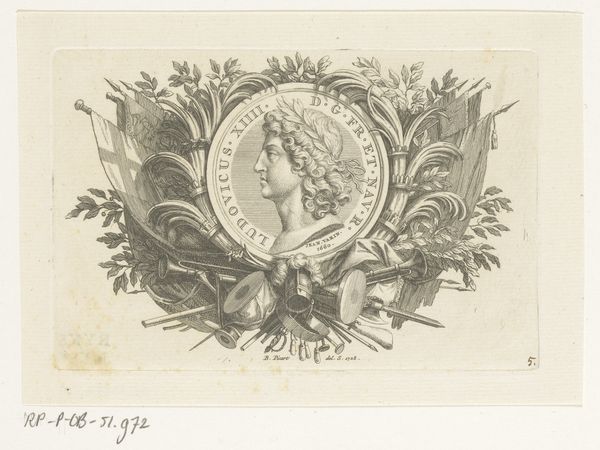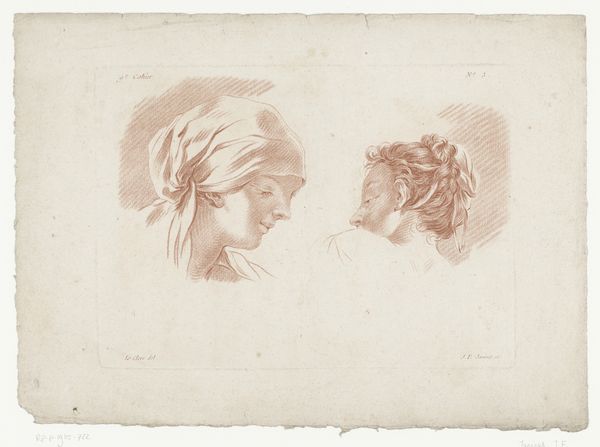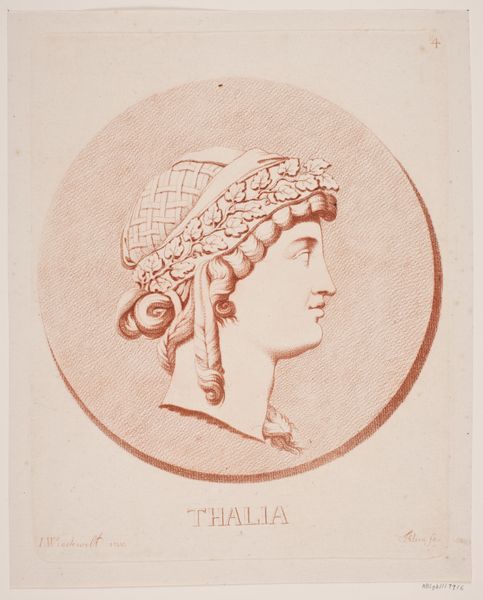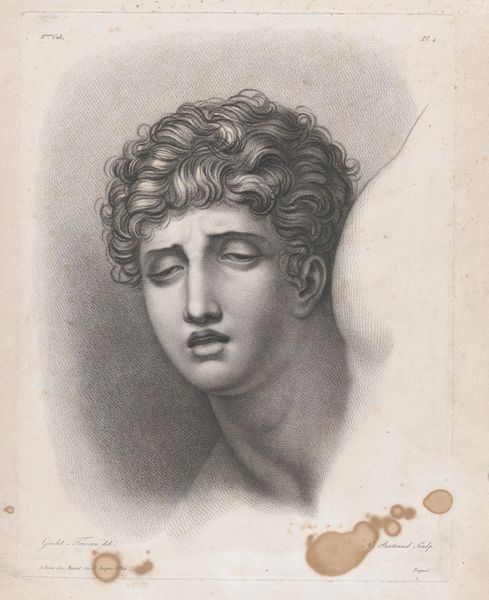
drawing, print, etching
#
portrait
#
drawing
#
neoclacissism
# print
#
etching
#
classical-realism
#
etching
#
line
#
history-painting
#
academic-art
Dimensions: 278 mm (height) x 229 mm (width) (plademaal)
This delicate image of Clio, the muse of history, was rendered by Terkel Kleve in the late 18th century using a printmaking technique called etching. The fine lines you see were incised into a metal plate with a sharp needle, then bitten by acid to create grooves that hold ink. The plate would then be carefully inked, wiped clean, and pressed onto paper, transferring the image. This process allowed for the creation of multiple impressions, making art more accessible to a wider audience. Look closely, and you'll notice the subtle gradations of tone, achieved by varying the density of the etched lines. The red chalk, or sanguine, ink gives the print a warm, classical feel, reminiscent of ancient Roman frescoes. Etching was a technique that democratized image-making, connecting fine art with the burgeoning world of print culture, and allowing artists like Kleve to disseminate their work and ideas more broadly. It’s a fascinating intersection of craft, technology, and artistic expression.
Comments
No comments
Be the first to comment and join the conversation on the ultimate creative platform.
